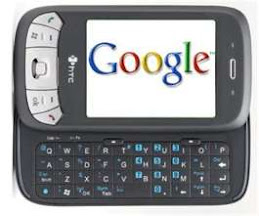- Three 1.2 volt NiCad or NiMH battery cells
- If you don't have 1.2 volt NiCad or NiMH battery cells, you can try nokia n95 battery
- Charge jack
- Electrical insulating tape
- Small knife
- Wire strippers
- Soldering iron
- Solder
- 1
- 2
- 3
- 4
- 5
- 6
- 7
- 8
- 9
- 10
All mobile phones have a number of features in common, but manufacturers also try to differentiate their own products by implementing additional functions to make them more attractive to consumers. This has led to great innovation in mobile phone development over the past 20 years

In modern technological era, the number of Internet user accessing Internet through of desktop and laptop is overtaken by the number the Internet mobile user. The growing trend to access the Internet via mobile phone is faster than easier than ever. The tremendous amount of functionality let us to do almost everything that we used to do in our laptop and desk top while online. It is very easier with continuous coverage everywhere in the city that one could ever imagine. The taxing is replaced by emails and chats online by number of messengers available in mobile phones. This emerging way to go for mobile Internet is really exciting for lovers of social networking. People are taking advantage of mobile interest by uploading live pictures of events going around. The extremely popular move allows us to be everywhere with our family and friends regardless of time and place. The most important aspect behind growth of mobile Internet is social networking sites such as twitter, face book, my space etc. People like to share details of our lives and everything on the social networking sites via mobile Internet. We can hold our best friends and relatives everywhere whiting the palm. The most advanced generation 4G is given international standard by International telecommunication Union. Millions of businessmen are provided the freedom like mobile office with better client communication from everywhere. Keep connecting with client by mobile ease the business deals. Mobile Internet also allows accessing the bank account online so that people can transfer the moneyeverywhere with just reach of their fingers. Now you can spend your time in your favorite coffee shop without missing your daily schedule.
Thanks to mobile Internet who gave us an endless reach throughout the globe. Moreover In transportation, the applications are developed for mobile who allows you to access the current flight status with online dynamic data. Even you can book your ticket and schedule your trip using mobile. If you are not familiar with the particular place you are visiting Google maps for you will do the job for you. Your mobile can get you on time at any place. E-commerce websites allows you to do shop from anywhere. Really life had never been that much easy before inversion of mobile and especially mobile Internet.
In this year several impressive new mobile handsets being released. Amongst these models is the eagerly awaited iPhone 4S from Apple whilst HTC have also released their new Windows 7.5 handset named the Titan. Here we compare these two premium smart phones and see which device comes out on top.
The public were hoping for a new design with the iPhone 4S but unfortunately the model sports the same look as the popular iPhone 4. This still looks superb but lacks the impact that a new design would have brought to the format. Apple is in good company with HTC in this area as all of their models follow a similar blueprint and the Titan maintains this trend. Where the model does stand out however is with its overall size which is huge thanks to the 4.7 inch screen that the model uses. Despite the extra width and height measurements the phone does maintain a relatively slim depth of 9.9mm and the weight is also fairly impressive at just 160 grams. Thanks to its 3.5 inch display the iPhone 4S is a much more compact affair. Whilst this may have disadvantages in some areas it does mean the phone is small enough to easily slip into a pocket and the depth of just 9.3mm makes it one of the slimmest phones available.
The iPhone 4Seclipses the HTC Titan in terms of storage capacity thanks to the model being made in three different sizes. Apple has introduced a huge capacity 64GB model to sit alongside the 32GB and the 16GB that are also available. The Titan offers one storage option which is 16GB which should prove ample for the average phone user but anybody wishing to store lots of music or video on the handset will be disappointed. In terms of RAM memory both of these devices offer an adequate 512MB. All of this storage is wonderful for saving your camera images and both of these models sport great digital cameras. The HTC boasts an 8 million pixel camera which is the same size as the one featured on the iPhone 4S. The Apple handset provides better results however thanks to the better quality of sensor that is used together with a wealth of features that make taking a photograph a simple task. Video recording is also superior on the iPhone as the model offers high definition capture in 1080P resolution rather than the 720P standard offered on the Titan.
The HTC Titan is without doubt the best Windows phone ever released but it still has some way to go before it can match the overall quality offered on the iPhone 4S.
The iPhone 4S and the HTC Titan are available now

No comments:
Post a Comment